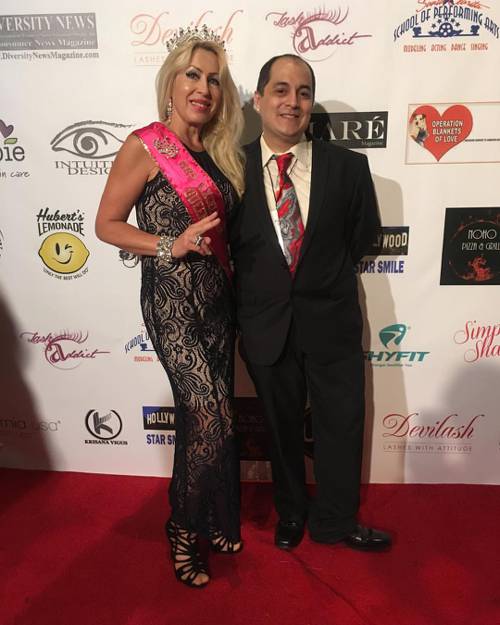
FAQ About The Evolution of Colorism in Popular Culture

What is colorism, and how is it defined in popular culture?
Colorism is the prejudice or discrimination against individuals with a darker skin tone, typically among people of the same ethnic or racial group. In popular culture, colorism manifests through the preferential treatment of lighter-skinned individuals in media, including films, television series, and advertising, where they are more frequently cast in leading roles and portrayed positively.

How has colorism historically influenced the representation of ethnic minorities in films?
Historically, colorism has influenced the casting and characterization choices in films by privileging actors and characters with lighter skin tones. This was evident in the early 20th century when fair-skinned actors of ethnic minorities were preferred for lead roles, and darker-skinned actors were often relegated to supporting or antagonist roles. Such practices have perpetuated stereotypes and limited diverse representation.

What role does the media play in perpetuating colorism?
The media plays a significant role in perpetuating colorism by setting standards of beauty that prioritize lighter skin tones. This is reflected in advertising, film, and television, where light-skinned individuals are often showcased as ideal beauty standards. Such portrayals can influence public perceptions and reinforce discriminatory attitudes towards darker-skinned individuals.

Can you provide examples of colorism in music videos?
Colorism is prevalent in music videos, where lighter-skinned models and dancers are often featured more prominently than their darker-skinned counterparts. Artists and producers sometimes face criticism for casting decisions that favor lighter-skinned individuals, which perpetuates the idea that lighter skin is more desirable.

Has the issue of colorism in popular culture changed over time?
While awareness of colorism has increased, leading to more discussions and critique, the issue still persists in popular culture. However, there is a gradual shift towards recognizing and challenging colorism. Diverse creators and consumers are advocating for more inclusive representation and calling out instances of colorism in media.

How has social media impacted the conversation about colorism?
Social media has significantly impacted the conversation about colorism by providing a platform for individuals to share personal experiences and challenge discriminatory practices. It allows for instant dissemination of information and mobilization of support for more equitable representations, thus keeping the issue at the forefront of cultural discourse.

Are there any movements or campaigns addressing colorism in Hollywood?
Yes, several movements and campaigns like "Oscars So White" have brought attention to the lack of diversity and the impact of colorism in Hollywood. Organizations and influencers advocate for more equitable representation by questioning casting choices and the systemic biases inherent in the entertainment industry.

How do casting choices in films reflect underlying colorist attitudes?
Casting choices often reflect colorist attitudes when lighter-skinned or ethnically ambiguous actors are frequently chosen for lead roles, particularly those associated with beauty, intelligence, or virtue. Such choices reveal an implicit bias that aligns lighter complexions with positive attributes, thereby perpetuating colorist narratives.

What impact does colorism have on darker-skinned actors and actresses?
Darker-skinned actors and actresses often face limited opportunities and typecasting due to colorism. They may be restricted to roles that reinforce stereotypes or have less professional visibility, which can affect their career advancement and contribute to broader societal issues of inequity and discrimination.

How do filmmakers balance addressing colorism and telling authentic stories?
Filmmakers can address colorism while telling authentic stories by ensuring diverse representation behind and in front of the camera and being mindful and intentional in character portrayals and narratives. Collaborating with consultants who understand colorism's nuances and its impacts can also aid in crafting responsible storytelling.

What are some recent films that address the issue of colorism in their narratives?
Recent films such as "The Hate U Give" and "In the Heights" address colorism by highlighting the experiences of darker-skinned characters and bringing these issues to the forefront of their narratives. Through diverse casting and exploring themes related to colorism, these films contribute to a broader discussion on racial identity and representation.

How does colorism intersect with other forms of discrimination in popular culture?
Colorism intersects with other forms of discrimination, such as racism and sexism, creating complex layers of bias and inequality in popular culture. For instance, women of color with darker skin tones face challenges that are unique to their gender and racial identity, impacting representation, opportunities, and societal perceptions.

Why is it important to discuss colorism in popular culture?
Discussing colorism in popular culture is crucial because it helps dismantle harmful stereotypes and promotes a more inclusive and honest representation of ethnic minorities. By recognizing and addressing these biases, the media and entertainment industries can contribute to societal understanding and appreciation of diversity.

What are the effects of colorism on young audiences?
Colorism can have profound effects on young audiences by influencing their self-esteem, identity, and perceptions of beauty. Exposure to media that prioritizes lighter skin can lead to internalized bias and affect how young people view themselves and others, making it essential to promote diverse and positive representations.

Has television tackled colorism differently than film?
Television has increasingly tackled colorism by creating series that intentionally highlight diverse cast and multifaceted characters of different skin tones. Shows like "Black-ish" and "Insecure" engage in conversations about colorism and feature storylines that explore the ramifications of these biases, reflecting a growing awareness and responsibility in the television industry.

Are there any notable documentaries about colorism?
Documentaries such as "Dark Girls" and "Skin" have tackled the topic of colorism by exploring its historical roots, personal narratives, and pervasive impact. These films provide a platform for voices often marginalized and promote a broader understanding of colorism’s effects across different communities.

How do cultural beauty standards perpetuate colorism?
Cultural beauty standards often perpetuate colorism by idealizing features associated with lighter skin tones, such as Eurocentric hair textures and facial features. These norms are reinforced through media portrayals, advertising, and social influence, which can marginalize individuals with darker skin tones and create societal pressure to conform.

Has the fashion industry addressed colorism effectively?
The fashion industry has faced criticism for its historical exclusion of darker-skinned models. However, progress is being made, with a notable increase in campaigns featuring diverse models and efforts to celebrate and include a wider range of skin tones. Brands are gradually recognizing the importance of representation and are responding to consumer demands for inclusivity.

How can audiences recognize and challenge colorism in media?
Audiences can recognize and challenge colorism by being critically aware of media portrayals and questioning narratives that prioritize lighter skin. Supporting diverse content and creators, advocating for inclusive representation, and engaging in discussions about media biases are essential steps towards challenging colorism in popular culture.

What are some strategies for creators to avoid colorism in their projects?
Creators can avoid colorism by actively casting diverse talent and ensuring representation in all aspects of production. Consulting with experts in diversity and inclusion can help identify scripts or scenes that may perpetuate colorist tropes. Additionally, fostering an inclusive environment that values varied perspectives and experiences can lead to more authentic storytelling.
